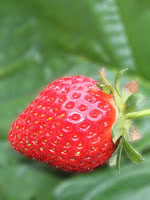Mon-Fri 9am - 5pm Mountain time
Kent Strawberry vs Bilberry
Vaccinium myrtillus
Fragaria ananassa Kent
CUSTOM GROW
Bilberry is a native perennial shrub valued for its small, blue-black berries that ripen in mid to late summer. The berries resemble blueberries but have a richer, more tart, and intense flavor. They have long been used for fresh eating, baking, and preserves, while also providing food for birds and mammals. In spring, its delicate pinkish flowers attract bees and other pollinators.
Growing low to the ground, Bilberry forms spreading colonies that create dense understory cover. This growth habit provides food and shelter for wildlife, and its foliage adds seasonal interest by turning red to purple in autumn. With its adaptability and ecological benefits, Bilberry is well-suited for naturalization, ecological restoration, and pollinator gardens.
Kent Strawberry is a favourite of urban gardeners and commercial growers. This June Bearing (Short Day) strawberry grows well on the prairies and produces high yields of bright red fruit that bursts with flavour. Great for fresh eating or try them in your next batch of jam or baking.
One of the most cold hardy strawberries!
Bilberry Quick Facts
Kent Strawberry Quick Facts
Toxicity: leaves may be unsafe in high doses

